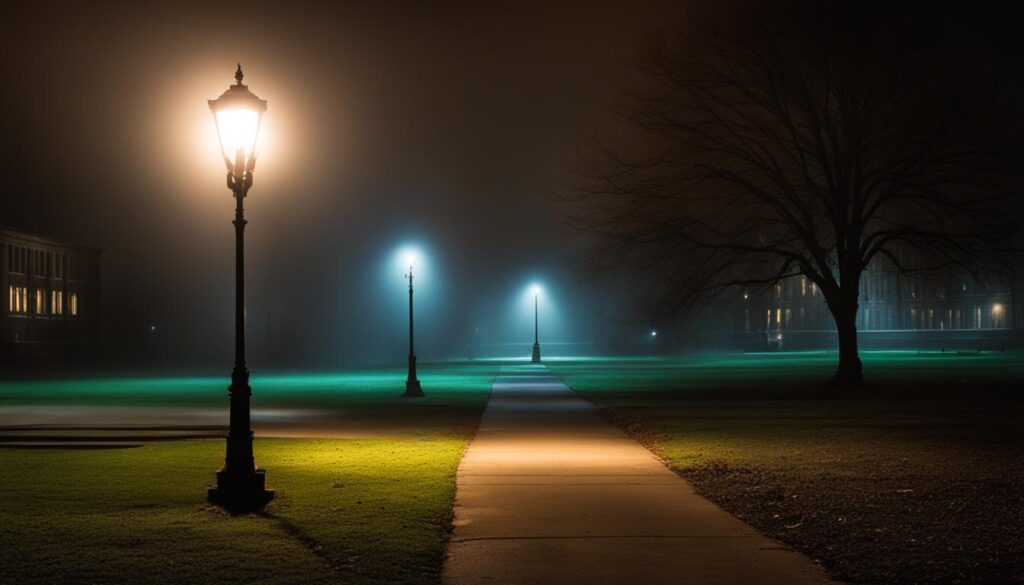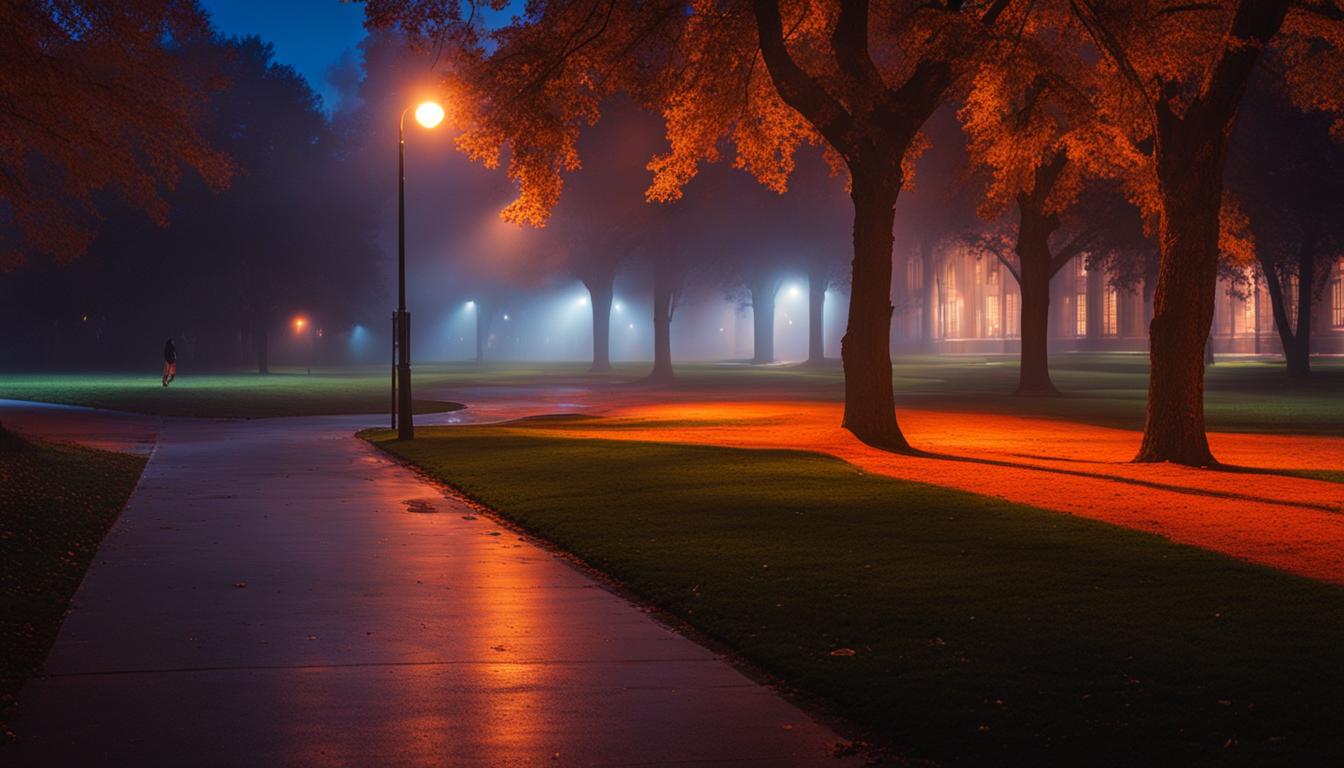Stephen King is one of the most influential horror writers of all time. Known for his ability to craft chilling tales that shock and terrify readers, King has cemented himself as a master of the genre. One of his most beloved short stories is “Strawberry Spring,” a classic tale that has endured the test of time.
In this article, we’ll delve into the world of “Strawberry Spring” and explore its enduring impact. From the plot and characters to the symbolism and setting, this iconic tale is a must-read for fans of horror and suspense. So, sit back and prepare for a deep dive into the world of Stephen King’s “Strawberry Spring.”
The Plot of “Strawberry Spring”
“Strawberry Spring” is a classic horror short story written by Stephen King in 1979 as part of his Night Shift collection. The story follows a college campus during a mysterious, unseasonably warm period in February called “Strawberry Spring,” in which a dense fog covers the campus. The narrator, a student at the college, begins to notice that a series of violent murders have been occurring on the campus.
As the story unfolds, the narrator becomes increasingly paranoid and begins to suspect everyone around him, including his own girlfriend. His fears are confirmed when he attends a town hall meeting and discovers that the murderer is actually an alter-ego of himself, triggered by the stress of “Strawberry Spring.”
King masterfully builds suspense and keeps readers on the edge of their seats until the very end. The story’s plot is gripping and intense as it explores the theme of identity through the concept of alternate personalities.
Stephen King’s Literary Style
Stephen King’s literary style is as distinctive as it is recognizable. He has a way of crafting stories that are both suspenseful and immersive, drawing readers into his worlds and characters. King is known for his ability to create a sense of dread and unease, masterfully building tension over the course of a narrative.
One particular aspect of King’s style is his use of horror as a means of exploring deeper human emotions and experiences. In many of his works, he examines the darker aspects of the human psyche, using horror and supernatural elements to shed light on our fears and desires.
In “Strawberry Spring,” King’s literary style is on full display. He uses vivid imagery to bring the setting to life, building an atmosphere that is both eerie and tense. His prose is sharp and evocative, drawing readers in and holding their attention until the very end.
Another key aspect of King’s style in “Strawberry Spring” is his use of twist endings. Throughout the story, King builds a sense of mystery and intrigue, leading readers down unexpected paths. The twist at the end of the story is both surprising and satisfying, tying together the threads of the narrative in a satisfying way.
| Features of Stephen King’s Literary Style | Examples in “Strawberry Spring” |
|---|---|
| Use of horror to explore human emotions and experiences | The blurred lines between reality and illusion, highlighting the human psyche and the power of memory |
| Vivid and immersive imagery | The atmospheric setting of the college campus during the eerie Strawberry Spring, evoking a sense of unease and dread |
| Sharp and evocative prose | The precise descriptions of the weather, the narrator’s thoughts and feelings, and the various events that unfold |
| Building tension and suspense throughout the narrative | The constant sense of unease and the mounting fear that something terrible is about to happen |
| Unexpected twist endings | The surprising reveal of the identity of the murderer and the final twist that leaves the reader questioning the reality of what they just read |
Overall, Stephen King’s literary style is both distinct and effective in creating suspenseful, thought-provoking stories. “Strawberry Spring” is a prime example of his ability to craft narratives that leave a lasting impact on readers.
Themes in “Strawberry Spring”
“Strawberry Spring” is a haunting tale that explores the complexities of identity, memory, and the blurred lines between reality and illusion. One of the primary themes of the story is the concept of identity, and how it can be both elusive and transformative.
The protagonist of the story is haunted by a mysterious figure from his past, whom he cannot fully remember or comprehend. This figure ultimately represents the protagonist’s own hidden fears and desires, and the discovery of this truth is a crucial turning point in the story.
The idea of memory is also central to “Strawberry Spring.” The story is told from the perspective of someone looking back on events that occurred in the distant past, and it emphasizes how memories can both shape and distort our perceptions of the world around us.
The boundaries between reality and illusion are also explored in “Strawberry Spring.” The story takes place in a dreamlike atmosphere, where the distinction between what is real and what is imagined becomes increasingly difficult to discern. This adds to the overall sense of unease and disorientation that permeates the story.
Themes in “Strawberry Spring”
| Themes | Description |
|---|---|
| Identity | The story explores the elusive and transformative nature of identity |
| Memory | Memories can both shape and distort our perceptions of the world around us |
| Reality vs. Illusion | The story blurs the lines between what is real and what is imagined, adding to the sense of unease and disorientation |
The Setting of “Strawberry Spring”
In “Strawberry Spring,” the setting is an integral part of the story’s atmosphere and tone, contributing significantly to the overall mood. The story is set on a college campus during a mysterious, unseasonable weather occurrence known as “strawberry spring.” The term refers to a period of warm weather in late winter that causes trees to bloom and birds to sing, creating the illusion of spring’s arrival.
This idyllic backdrop contrasts with the horror and suspense that unfold throughout the story. The campus, typically a symbol of safety and learning, becomes a mysterious and foreboding maze, where shadows and secrets lurk in every corner. The setting enhances the story’s tension, creating an ominous backdrop for the central conflict.

King uses vivid imagery to describe the setting, immersing readers in the story’s world and creating a strong sense of place. The campus’s layout, with its winding paths and secluded corners, adds to the story’s sense of mystery. Additionally, the college setting reflects the themes of innocence and discovery that are present throughout King’s work.
Main Characters in “Strawberry Spring”
Stephen King’s “Strawberry Spring” features several well-developed characters who play significant roles in the narrative. Here are the main characters:
| Character | Description |
|---|---|
| Jack Sawyer | A young journalist who is the narrator of the story. Jack is haunted by the memories of a previous Strawberry Spring and becomes obsessed with solving a string of murders on the college campus. |
| Janitor | A mysterious janitor who becomes a key figure in the investigation of the murders. He provides Jack with crucial information that helps him unravel the mystery. |
| Girlfriend | Jack’s girlfriend, who is a student at the college where the murders take place. She serves as a sounding board for Jack’s theories and helps him piece together the clues. |
| The Springheel Man | The serial killer terrorizing the campus. Little information is known about his identity, and his motives remain a mystery. |
Each character in “Strawberry Spring” has a distinct personality and motive, adding to the complexity and intrigue of the story. Their actions and interactions provide the backbone of the narrative, driving the plot forward and keeping readers engaged.
Symbolism in “Strawberry Spring”
Stephen King is well-known for his use of symbolism in his works, and “Strawberry Spring” is no exception.
Throughout the story, King employs various symbolic elements to enhance the mood and theme of the narrative. One of the most prominent symbols is the strawberry spring itself, which represents the fragility of memory and the deceptive nature of time.
Another symbol that appears repeatedly is the fog that haunts the campus, serving as a metaphor for the sinister forces that lurk within the human mind.
The character of Jack is another symbol in the story, representing the human tendency to suppress traumatic memories and the devastating consequences that can result from trying to forget the past.
Overall, the use of symbolism in “Strawberry Spring” adds an additional layer of depth and complexity to the story, helping to elevate it beyond a simple horror tale into a thought-provoking exploration of human nature.
Critiques and Reception of “Strawberry Spring”
Stephen King’s “Strawberry Spring” has garnered both positive and negative feedback since its publication. Critics have praised the story’s haunting atmosphere and intricate character development, while others have criticized its slow pacing and lack of clear resolution.
Despite these mixed critiques, “Strawberry Spring” has remained a popular and enduring tale among Stephen King fans. The story’s impact on readers is evident through its inclusion in numerous best-of horror anthologies and its adaptation into several other media formats.
Critical Analysis
| Positive Feedback | Negative Feedback |
|---|---|
|
|
Overall, however, the reception of “Strawberry Spring” has been mostly positive, with many critics and readers praising Stephen King’s mastery of the horror genre and his ability to craft a story that lingers in the mind long after it’s finished.
Influence of “Strawberry Spring” on Stephen King’s Works
The impact of “Strawberry Spring” reached far beyond its initial publication. As one of Stephen King’s earliest works, it served as a springboard for his subsequent writing. The themes, motifs, and techniques present in this short story can be seen in a wide range of King’s books, cementing its influence and importance in the author’s canon.
One notable example of “Strawberry Spring’s” influence can be found in King’s novel “The Shining.” Both stories feature a protagonist struggling with their own identity and a sense of internal darkness. The use of atmospheric setting and subtle psychological horror is also present in both works.
Another book that draws inspiration from “Strawberry Spring” is “The Dark Half.” In this novel, King explores the duality of human nature and creates a haunting, ominous tone that is reminiscent of his earlier work. The use of vivid and descriptive language to create a sense of foreboding is another technique that is seen in both stories.
Overall, “Strawberry Spring” is a crucial piece of Stephen King’s literary landscape. Its influence can be seen in many of his subsequent works, and its enduring legacy is a testament to the power of his writing.

Adaptations of “Strawberry Spring”
Stephen King’s “Strawberry Spring” has not been adapted into any film yet. However, it remains a popular choice for audio adaptations.
Podcast Adaptations
The story was adapted as a podcast episode for the popular horror podcast, Nightmare Magazine, in 2015. The episode was narrated by actor Malcolm Charles, whose expressive voice brought the eerie tale to life, captivating listeners and creating an immersive experience.
Television Adaptations
As of now, there are no television adaptations of “Strawberry Spring.” However, given the popularity of Stephen King’s works in the entertainment industry, it is always possible that in the future, this chilling tale could make its way to the screen.
Similar Works by Stephen King
Stephen King’s vast literary repertoire boasts several works that share both thematic and stylistic similarities with “Strawberry Spring.” These works are a must-read for any fan of the master of horror and suspense.
The Mist
Another horror novella written by Stephen King, “The Mist,” is a must-read for anyone who enjoyed the suspenseful atmosphere of “Strawberry Spring.” Like its predecessor, this story explores the concept of humanity’s darkest impulses in the face of impending doom.
The Shining
Considered a masterpiece of the horror genre, “The Shining” showcases Stephen King’s unique approach to suspense and terror. The story follows a family of three as they spend a winter in an isolated hotel, which quickly becomes the site of unspeakable horrors.
Carrie
Stephen King’s first novel, “Carrie,” is a gripping tale of a bullied high school student who unleashes her terrifying latent powers. Driven by themes of revenge and teenage angst, this novel remains a classic in the horror genre.
Overall, Stephen King’s works are renowned for their ability to terrify and captivate readers, and these titles are no exception. Whether you’re a fan of “Strawberry Spring” or simply crave a good scare, these books’ unique blend of suspense, horror, and psychological insight are sure to deliver an unforgettable reading experience.
Conclusion
Stephen King’s “Strawberry Spring” is a classic tale that has endured the test of time. The story’s plot, themes, setting, characters, and symbolism all contribute to its lasting impact on readers. King’s distinctive literary style manifests in the story, creating a sense of suspense and horror that keeps readers engaged.
The critical reception of “Strawberry Spring” has been mixed, but its influence on Stephen King’s subsequent works is undeniable. The story has inspired adaptations in various media formats, including films, television shows, and podcasts.
For those who enjoyed “Strawberry Spring,” other works by Stephen King that share similar themes and styles include “The Mist,” “The Shining,” and “Salem’s Lot.”
Overall, “Strawberry Spring” remains an essential part of Stephen King’s literary repertoire, and its impact will continue to be felt by readers for generations to come.



